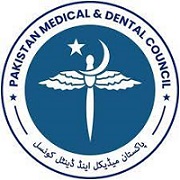EDUCATIONAL TRAINING OF LADY HEALTH WORKERS AND PREVENTION OF ABORTION RELATED MORBIDITY AND MORTALITY
Abstract
One of the major challenges faced by developing world for achieving universal health care includes shortage of Manpower indicated by the fact that an estimated one billion people will never see a health worker during the course of their lives. As a consequence to this shortage millions of people die or are disabled each year1. One solution to this dilemma was increasing health workforce by induction of community health workers (CHWs), members of the community who are trained to provide basic health services. They offer the first and at times only admittance to health services for people in the developing world2. But, research has shown that, CHWs are not effectively trained, remunerated, or retained. In Pakistan Lady Health Worker Program started with the overall goal to contribute to poverty reduction by improving the health of the people. So Lady Health Workers (LHWs) were recruited and trained to provide family planning services and primary health care (PHC) in their own communities3. The health services, based on PHC, include among other things: education concerning prevailing health problems and the methods of preventing and controlling them, and provision of essential drugs and supplies. One of the major current problems is Abortion. Worldwide 61% (Six out of 10) of all unintended pregnancies, and 29 % (3 out of 10) of all pregnancies, end in induced abortion. And out of all abortions around 45% are unsafe, of which 97% occurring in developing countries4. An estimated Over two million abortions are performed annually in Pakistan5. Involved health risks depend on whether the procedure is performed safely or unsafely. Unsafe abortion is common in rural areas, where plant species are used to terminate an unwanted pregnancy6 and restricted abortion law countries ,where most attempt to self-abort or go to untrained person7. fIn Pakistan, mostly abortions are due to unwanted pregnancy, poverty, lack of awareness about Reproductive Health and Family planning methods on part of both husband and wife. Abortion related care includes emergency treatment of abortion, post-abortion family planning services including counseling and making links between the post-abortion emergency services and the reproductive healthcare system. A Lady Health worker informs and counsels any pregnant adolescent about the possible consequences (medical and psychological) of unsafe abortion. In case of any of any of such complication’s immediate referral to a higher health facility (often a hospital) is needed where she can get sufficient care. Delay in seeking care specially demands improved reproductive health information about abortion care. Improving current PAC services at lower level facilities will also minimize delays resulting from long referral processes8. Improving knowledge through trainings of the health workers about prevention of abortion and risk factors will bridge the gap between the current and ideally required level of knowledge for delivering preventive abortion related health care services. Theses trained health workers can utilize this knowledge for increasing awareness among reproductive age group females especially of rural community. And eventually abortion related morbidity and mortality can be significantly reduced which will contribute for attainment of the Sustainable MDG related to decreasing maternal morbidity and mortality.






